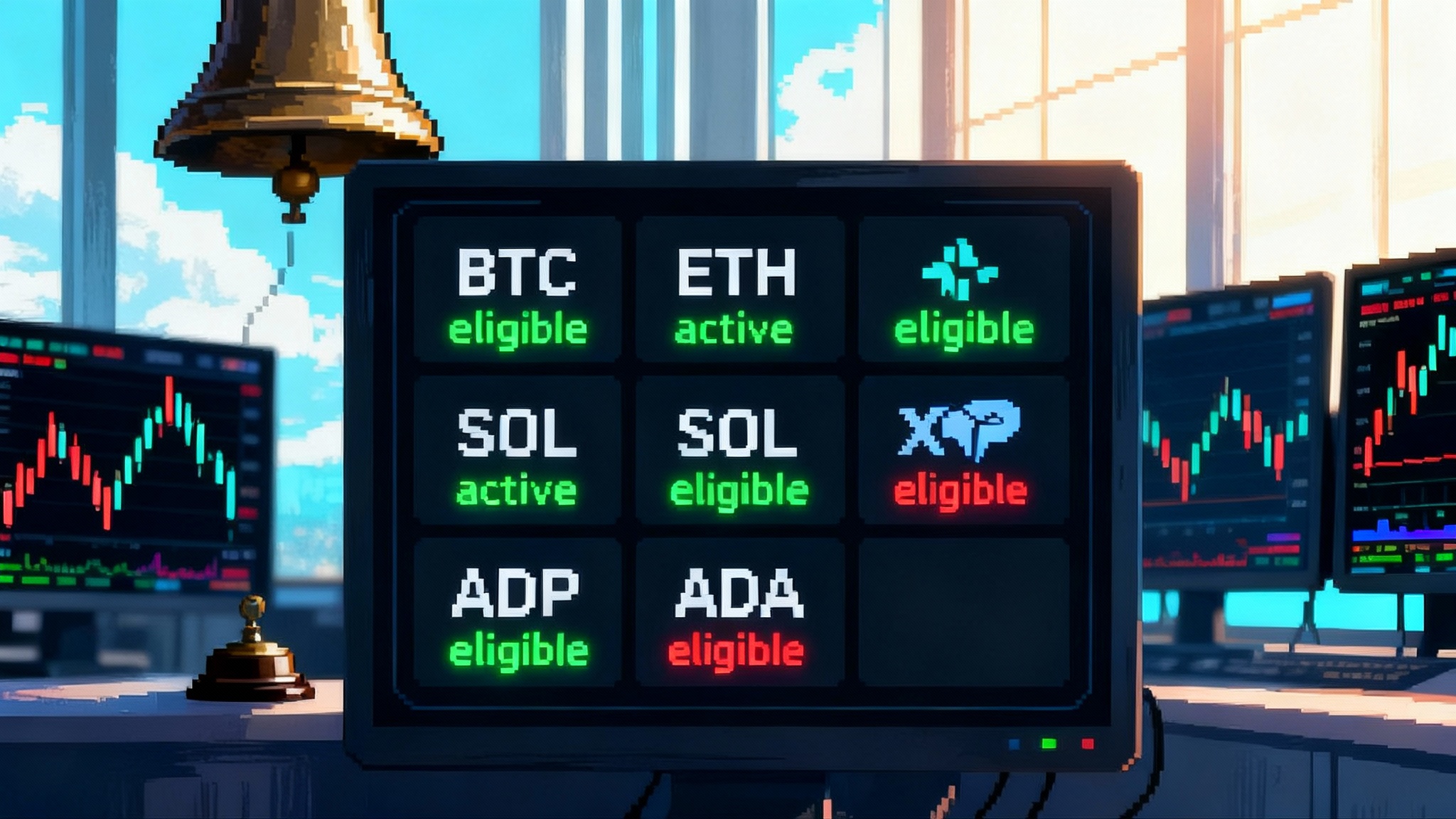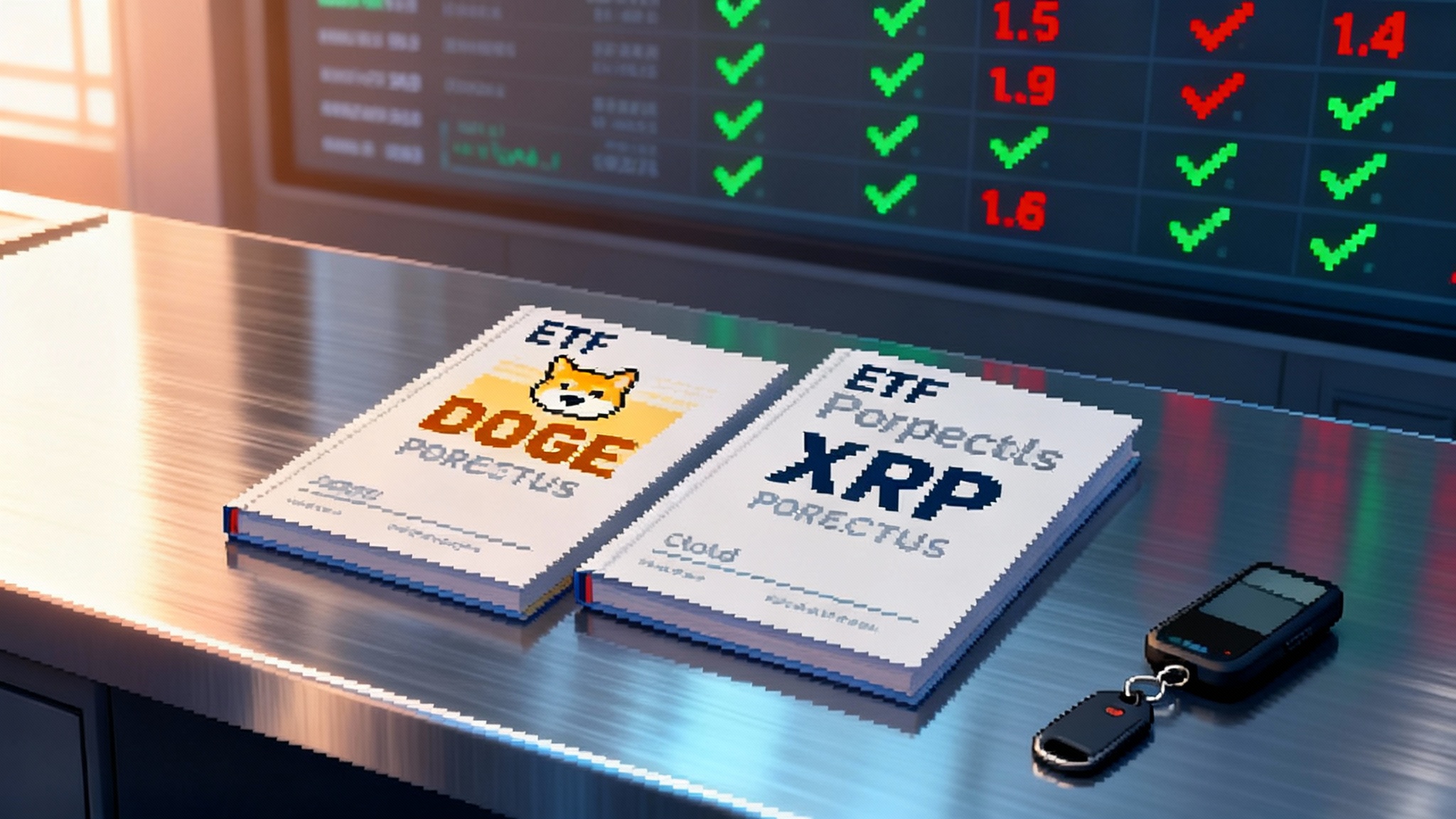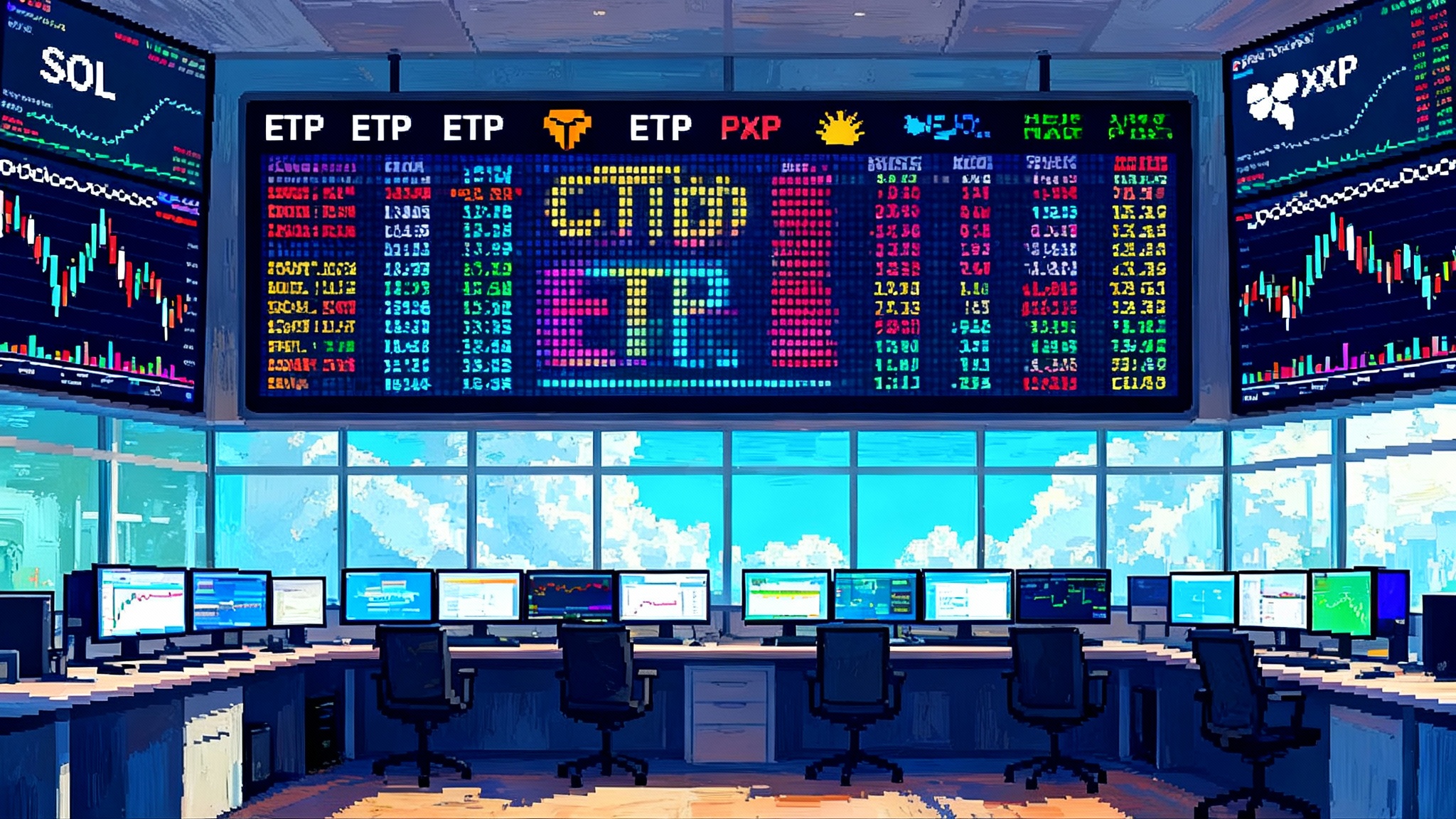SEC Fast-Tracks Crypto ETFs: What Generic Rules Unlock Next
On September 18, 2025, the SEC approved generic listing standards that let NYSE Arca, Nasdaq, and Cboe BZX list spot crypto ETPs without case-by-case rule changes. Approvals can now arrive in about 75 days. Here is what changed, why GDLC is trading, what is likely next, and a 30-60-180 day playbook.

What the SEC changed on September 18, 2025
The SEC voted to let NYSE Arca, Nasdaq, and Cboe BZX adopt generic listing standards for Commodity-Based Trust Shares that include crypto assets. In practice, if a new crypto exchange-traded product meets those published standards, an exchange can list it without filing a bespoke rule change and waiting for a Commission order. See the official language in the SEC approval of generic standards.
If you need a refresher on structures and risks, start with how crypto ETPs work.
Why approvals may now arrive in about 75 days
Under the old approach, each spot crypto ETP needed both an exchange rule change and an issuer registration, with reviews often stretching toward 240 days. Under the new framework, a product that fits the generic standards no longer needs an individual exchange rule change. Issuers still must clear their registration statements, but the calendar is far shorter. For a succinct rundown of the new timing, see the Reuters timeline for approvals.
For context on the first wave of products, revisit our spot Bitcoin ETF overview.
The new generic tests that matter
A crypto ETP can come to market under the generic standards if the underlying reference asset meets at least one of these surveillance and market-quality conditions:
- The commodity, or instruments referencing it, trade on a market that is a member of the Intermarket Surveillance Group, with data accessible to the listing exchange.
- Futures on the commodity have traded for at least six months on a designated contract market with a robust surveillance-sharing agreement.
- On an initial basis only, an ETF that delivers at least 40 percent economic exposure to the commodity already lists on a national securities exchange.
Two operational themes run throughout:
- Continuous transparency such as daily NAV, intraday indicative values, and reference rates disseminated at least every 15 seconds, plus rapid posting of key product information on the exchange website.
- Ongoing listing health checks including minimum shares outstanding, minimum holder counts after 12 months, and clear delisting triggers if disclosures or data feeds lapse.
Why a multi-asset crypto ETP is trading now
The same vote did more than set standards. The Commission also approved the listing and trading of Grayscale’s multi-asset product based on the CoinDesk 5 Index. The vehicle, now trading as Grayscale CoinDesk Crypto 5 with ticker GDLC on NYSE Arca, became the first United States multi-crypto ETP under the new framework. It illustrates how diversified baskets can qualify when each component meets the eligibility tests.
Which assets are likely next
The six-month futures criterion immediately highlights assets with active, regulated futures on major venues. With that box checked and sufficient disclosure, custody, and reference-rate quality, assets such as Solana and XRP are strong candidates for early spot ETPs under the generic pathway. Where neither regulated futures nor ISG-accessible surveillance exists, issuers may have to wait for more infrastructure or pursue a slower bespoke route.
Winners and losers
Winners
- Scaled crypto ETP issuers able to reuse portfolio operations, pricing, tax, audit, and AP relationships across more tickers.
- Listing exchanges with deep market-maker networks that can compete on speed, liquidity programs, and options ecosystems.
- Index and benchmark providers with transparent governance and resilient calculation infrastructure.
- Derivatives venues and market makers that provide the hedging backbone for creations and redemptions, reducing spreads as liquidity grows.
- Qualified custodians with multi-asset cold storage capabilities and institutional controls.
Losers
- High-fee OTC trusts that thrived on scarcity pricing and limited liquidity.
- Assets without surveillance pathways that lack regulated futures or ISG-accessible trading venues.
- Late-to-scale service providers in fund admin, tax, audit, or custody.
Liquidity, spreads, and basis: what changes next
- Primary market creation will lean on liquid futures for hedging during creations and redemptions. Where futures liquidity is thin, expect wider spreads and more frequent premium or discount behavior.
- Secondary market trading in tier-one products can tighten within weeks as APs learn microstructure and arbitrage channels mature. Complex baskets will trade wider and be more sensitive to data or custody hiccups.
- Basis relationships between spot, futures, and ETP prices will become more visible. Index-tracking products must manage constituent changes without dislocations.
Custody and operations: the new headaches
- Multi-asset cold storage magnifies operational risk. Key management, wallet segregation, and deposit sweeps must scale across coins with different address formats and settlement latencies.
- Staking and protocol features require clear disclosures. Many early products are likely to avoid staking to keep creations and redemptions clean.
- Cash versus in-kind flows will favor cash creations for simplicity, especially in baskets.
- Counterparty concentration will be a real concern as many products depend on a small set of custodians and liquidity providers. For deeper background, see institutional crypto custody.
How GDLC reached screens so quickly
Grayscale’s basket launched quickly because the issuer already had an operating fund, a service stack, and an index framework, and because the Commission approved its listing alongside the new standards. The process did not require a custom surveillance argument, only adherence to transparency, custody, and eligibility checks.
30-60-180 day playbook
For issuers
- Next 30 days
- Map your roadmap to the eligibility tests. Prioritize assets with at least six months of regulated futures and robust reference rates.
- Lock in service providers across custody, pricing, index licenses, and AP capacity.
- Pre-clear disclosures and build daily NAV and intraday dissemination workflows to meet exchange posting rules.
- Next 60 days
- File or update registration statements with streamlined risk and operations sections aligned to the new standards.
- Run creation simulations with APs and market makers, using listed futures for pre-hedging where available.
- Stand up basket governance for rebalances, forks, and data-feed incidents.
- Next 180 days
- Sequence launches to avoid cannibalization. Lead with the most liquid single-asset products, then roll out baskets.
- Prepare for fee compression with breakpoints or founder share classes.
- Coordinate with exchanges on options listings to deepen liquidity.
For exchanges
- Next 30 days
- Publish product pages that meet the five-day posting rule and standardize templates for disclosures, IIVs, and index files.
- Finalize surveillance-sharing agreements and data entitlements with qualifying markets.
- Next 60 days
- Calibrate market-maker incentives for single-asset and basket products.
- Test halt and volatility mechanisms suitable for 24-7 underlying markets.
- Next 180 days
- Launch options on the most active ETPs and coordinate auctions for better price discovery.
For investors
- Next 30 days
- Decide on wrapper preferences. Commodity ETPs are not registered under the Investment Company Act of 1940 and may have different protections and tax outcomes.
- Build a coverage list focused on the largest, most liquid products.
- Next 60 days
- Watch spreads and execution quality, not just fees. A slightly higher fee can still be cheaper to own if spreads are tighter.
- Check reference-rate methodology and exchange constituents.
- Next 180 days
- Graduate from single-asset to balanced baskets if your mandate allows to reduce idiosyncratic risk.
- Use listed futures selectively to manage basis and rebalance efficiently.
Open questions to monitor
- Scope and eligibility for assets without regulated futures or ISG coverage.
- SEC discretion to suspend trading or challenge disclosures if investor protection concerns arise.
- Custody concentration risk as more assets accumulate at a few providers.
- Disclosure evolution around staking, forks, and network events as real-world cases emerge.
Bottom line
Generic listing standards turn crypto ETP approvals from one-offs into a rules-based process. With the futures box now checked for more than Bitcoin and Ether, assets like Solana and XRP are positioned to be early additions under the new pathway. GDLC’s launch shows how diversified exposure can become investable quickly once criteria are codified. Expect more choice, faster launches, and tighter spreads where hedging is deep.








